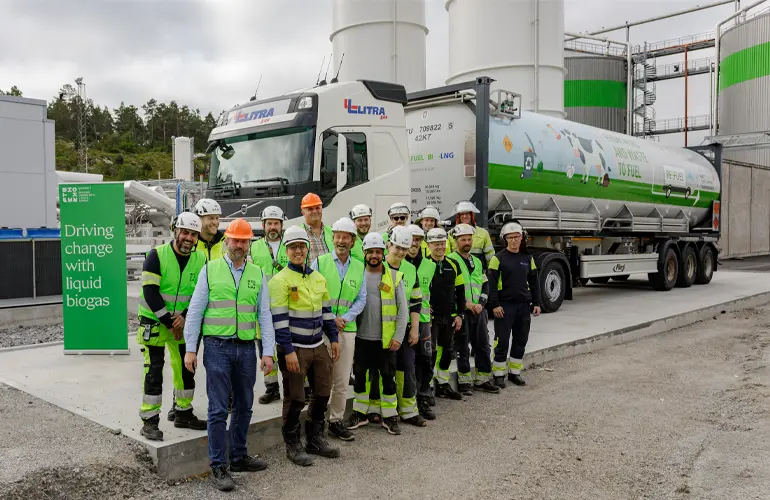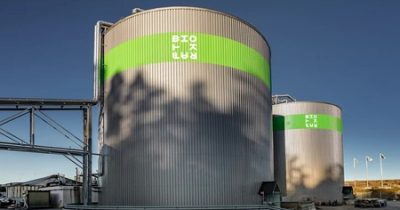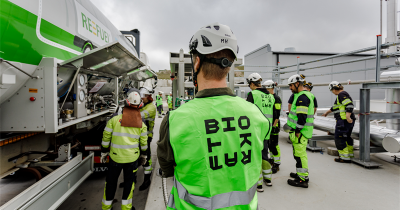 Powerhouse Biokraft has delivered the first batch of bio-LNG (biomethane) produced at the recently built biomethane liquefaction plant in Södertern.
Powerhouse Biokraft has delivered the first batch of bio-LNG (biomethane) produced at the recently built biomethane liquefaction plant in Södertern.
We are talking about two containers of 17 tons each (34 tons in total) of bio-LNG, which will be used for the needs of freight transport in Northern Europe. This amount of biomethane enough for fossil-free driving with a fully loaded long-haul truck for approximately 100,000 kilometres.
Biokraft’s biogas is 100 per cent fossil-free and produced by digesting collected food scraps and slaughterhouse waste from municipalities in Greater Stockholm.
The newly built liquefaction plant is located directly adjacent to the digesters in Södertörn and converts biomethane into liquid through cooling. The unit has a production capacity of 220 GWh per year and is thus the world’s largest (with a production capacity of 50 tons of bio-LNG per day). The company’s potential market is significantly broadened towards heavy road transport, shipping and industry thanks to liquefaction. Bio-LNG has a high energy content per unit volume and can be transported long distances at a reasonable cost to meet a strong demand in Northern Europe.
“The launch of Stockholm bio-LNG is a major strategic milestone and strengthens our market position as one of Europe’s leading bio-LNG producers in the Northern European market. The project also shows that, in line with our strategic growth plan, we have the competence and capacity to build and operate large-scale biogas plants,” says Matti Vikkula, CEO of Biokraft.
The Stockholm bio-LNG project started two years ago. The investment is approximately SEK 330 million and has been financed with equity, bond loans and government investment support from Klimatklivet.
Today, the Stockholm bio-LNG project will be in the commissioning phase for some months while production is scaled, and functions and delivery parameters are tested. The company predicts that the facility will operate at full capacity by the end of the year.
Source: Bioenergy Insight.

